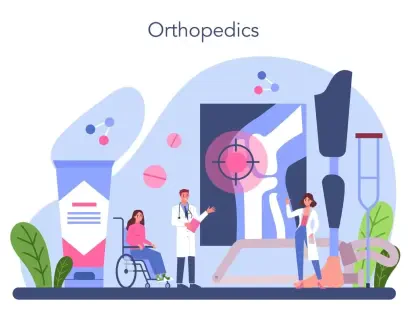At the age of 26, Sarah, a graphic designer from Chicago, faced a harsh reality when she was abruptly dropped from her parents’ health insurance plan, a transition often dubbed the “insurance cliff.” With a modest income and no employer-sponsored coverage, she scrambled through the labyrinth of marketplace options, only to end up with a high-deductible plan that left her $7,000 in debt after an unexpected hospital visit. Her story is far from unique, reflecting a broader crisis among millennials who grapple with skyrocketing costs and systemic barriers in securing affordable health care. This issue resonates deeply in today’s economic landscape, where financial instability and policy uncertainty amplify the struggles of young adults. This analysis delves into the systemic challenges, real-world impacts, expert insights, and future outlook for millennial health insurance, culminating in a compelling call for reform to address this pressing concern.
The Growing Health Insurance Crisis for Millennials
Coverage Gaps: A Statistical Snapshot
The transition at age 26 marks a critical vulnerability for many young adults, with data revealing a stark reality about coverage gaps. Approximately 15% of 26-year-olds remain uninsured, the highest rate among any age group in the United States, according to recent health policy analyses. This statistic underscores the abrupt shift from parental plans to independent coverage, often leaving millennials exposed during a pivotal life stage. The problem is compounded by the rise of gig economy jobs, where employer-sponsored insurance is scarce, affecting over 30% of young adults in such roles who lack stable benefits.
Beyond uninsured rates, medical debt looms large as a pervasive issue for this demographic. Over 50% of individuals aged 18 to 29 report having incurred medical debt in recent years, often due to high out-of-pocket costs and unexpected expenses. These financial burdens highlight a troubling trend where even insured millennials struggle to afford care, pointing to deeper flaws in the accessibility and affordability of health plans tailored to their needs.
Systemic Barriers and Personal Struggles
Navigating the health insurance landscape proves daunting for many millennials, as illustrated by real-life experiences of frustration and hardship. Take Elizabeth, a 27-year-old from Salt Lake City, who, alongside her partner, faced a staggering $9,000 bill after emergency care despite having a subsidized plan with a high deductible. Such stories reveal how the complexity of marketplace options, coupled with inadequate coverage, often leads to financial distress rather than security, undermining the very purpose of insurance.
Systemic issues further exacerbate these challenges, with limited provider networks and restricted access to essential services like mental health care leaving many without adequate support. For instance, Evan, a young professional from the same city, had to forgo necessary therapy sessions due to diminished coverage under his plan. Additionally, a lack of awareness about publicly funded navigator programs means countless millennials miss out on crucial assistance, navigating a convoluted system alone with dire consequences.
The human cost of these barriers can be devastating, as delays in care due to coverage gaps sometimes result in life-threatening situations. Consider the case of a young adult who postponed treatment for a chronic condition, only to face severe complications when coverage lapsed. These examples underscore the urgent need to address systemic inadequacies that disproportionately impact a generation already burdened by economic uncertainty and shifting job markets.
Expert Perspectives on Systemic Failures
Health policy experts have voiced significant concerns over the current state of insurance options available to millennials, pointing to fundamental flaws in the system. Karen Pollitz, a seasoned analyst in health policy, critiques the overwhelming presence of substandard plans in marketplaces, noting that meaningful coverage is often buried beneath risky, low-quality options. Her insights highlight a critical mismatch between the promise of accessible care and the reality of navigating a market that prioritizes profit over protection.
Advocacy groups, such as Young Invincibles, echo these sentiments, emphasizing the profound frustration and sense of betrayal felt by young adults attempting to secure coverage. Their reports suggest that millennials often feel abandoned by a system that fails to provide clear guidance or affordable choices at a time when they are most vulnerable. This perspective sheds light on the emotional toll of wrestling with an opaque and unforgiving insurance landscape.
Moreover, experts agree that political decisions have significantly eroded protections initially designed to support young adults. The removal of key mandates and cuts to funding for enrollment assistance have weakened marketplace stability, leaving many without viable options. This consensus among analysts and advocates reinforces the pressing need for comprehensive reform to rebuild trust and ensure that health care systems serve rather than hinder this demographic.
Future Outlook: Navigating Uncertainty and Reform
Looking ahead, potential developments in health insurance policy offer a glimmer of hope for millennials, though significant challenges persist. Recent federal standards introduced to promote “easy pricing” and “standard plan” options aim to improve coverage quality by ensuring basic services like primary care and emergency visits are accessible. While these measures represent a step forward, enforcement remains inconsistent, with many plans still falling short of meeting essential criteria for adequate protection.
However, looming uncertainties threaten to undermine progress, as political shifts could lead to premium spikes and reduced affordability. The risk of subsidy reductions under potential policy changes poses a substantial barrier, particularly for young adults already struggling with limited incomes. This instability suggests that without robust advocacy and legislative action, the financial strain on millennials may intensify in the coming years, further limiting access to necessary care.
On a broader scale, the long-term implications of these trends are profound, with medical debt likely to hinder financial stability for a generation. Yet, there is potential for positive change if stronger regulations and support mechanisms are prioritized. Successful advocacy efforts could pave the way for more equitable systems, ensuring that health care becomes a right rather than a privilege for young adults navigating an uncertain future.
Conclusion: A Call for Change in Millennial Health Coverage
Reflecting on the past struggles of millennials with health insurance, it is evident that the insurance cliff at age 26, coupled with financial burdens and systemic inadequacies, has created a profound crisis. The complexity of marketplace plans and the erosion of protective policies have left many young adults vulnerable, often facing dire health and economic consequences. These challenges underscore a critical gap in support for a generation at a pivotal life stage.
Moving forward, actionable steps are imperative to address these longstanding issues. Policymakers need to prioritize reforms that simplify insurance options and ensure affordability, while insurers must commit to offering comprehensive plans that meet real needs. Society as a whole must advocate for stronger safety nets, ensuring that turning 26 no longer marks a perilous drop into uncertainty but a secure transition into adulthood with accessible health care as a foundation.









